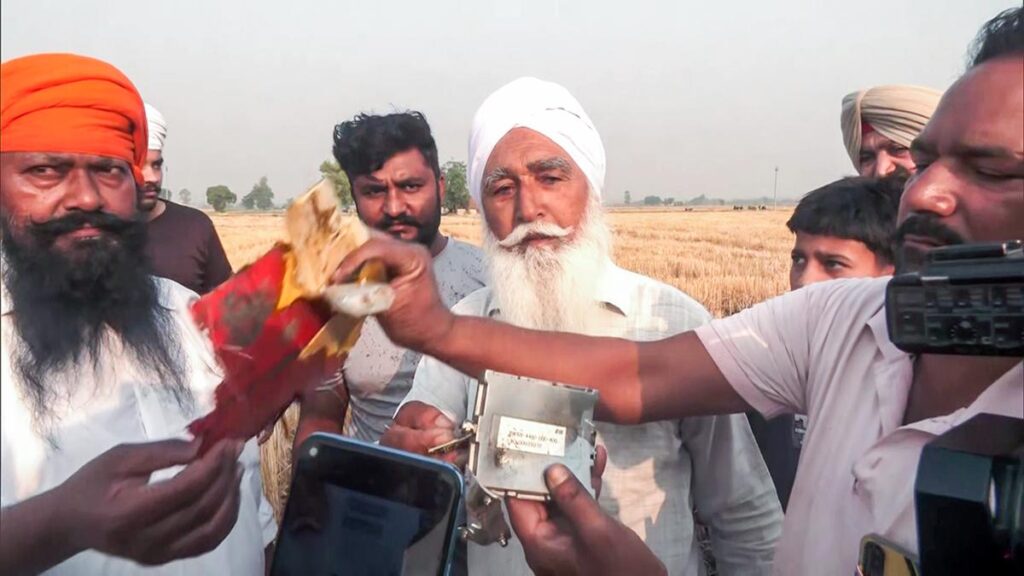As the conflict between India and Pakistan escalated with the launch of Operation Sindoor on May 7, after the fateful Pahalgam terror attack on April 22, the past few days have been marked with uncertainty, turbulence, scrutiny and strife for people in North India. The Government had instructed blackouts for the first time since the Indo-Pak war of 1971 and even though the “stoppage of firing”, which many are calling a ceasefire, announced on May 10, brought in some respite that lasted only a few hours, the situation remains grim and as unpredictable.
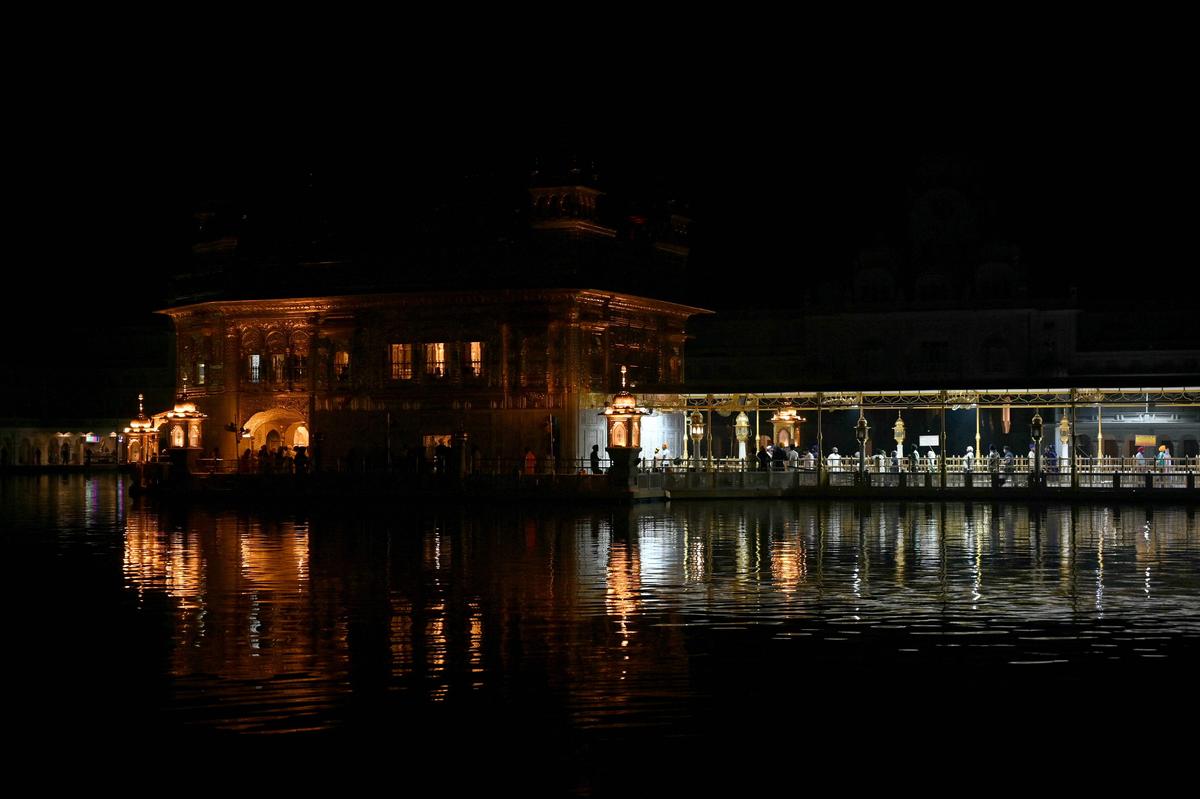
A general view of the Golden Temple during a blackout amid a surge in border tensions, in Amritsar on May 9, 2025.
| Photo Credit:
AFP
At my home, in Chandigarh, everyone was jubilant, preparing for a vacation with their first grandchild. My sister and her four-month-old were visiting the city from Canada and had planned a trip to the Golden Temple, Amritsar, Dehradun and Mussoorie. On May 6, we had left for Amritsar, but soon, on May 9, we had to return to Chandigarh for safety.
Attending to the call of blackout in Punjab, Chandigarh and other regions of North India, the men of the house were guided to bring their black turbans, which were to be used as makeshift curtains. My father, uncles and brother were pressing drawing pins on the top corners of the wooden window fixtures of our house, while the ladies cut and stitched the black turbans into curtains. “Just leave the ends of the thread loose for them to wound around and knot to the drawing pins and quickly make the pleats with a running stitch. Hurry up!,” my mother ordered.

As we obeyed, my father ascended the staircase that leads to the rooftop and examined the neighbourhood. “Ah, the lights in a couple of houses are still switched on. It’s 7pm already. This is beginning to remind me of 1971,” he said.
At this moment, the black curtains were put up as an additional barrier. All the lights were switched off at dinner time. “We were living in the Air Force quarters back then, in 1971, and I remember how young boys had made squads to do a recce of the area. If they spotted any light switched on in any house, they would break the windows by throwing stones at the house. We had also dug up a six-by-four-foot trench in the backyard of our house. Every time the sirens were sounded, we would go and sit in the trench,” he recalled. My mother added, “In Amritsar, we were served dinner by 5pm and would put black curtains, just like the ones now, on all windows. That time, my father had dug out a tunnel in the backyard and made a small bunker. In case the firing became loud or one heard the sound of too many jets, we would run to the tunnel and hide in the bunker.”
Unlike Amritsar, Chandigarh offered some respite from the continuous buzzing sounds and sonic booms until the clock struck 1.22am on May 9. The blaring sirens woke up my little nephew from his deep sleep and as he started bawling, my sister snuggled closer to him and started to pray. My uncle, father and I woke up too but remained in our beds until the roaring sound (of probably jets) shook us. I ran out of the room, so did my uncle. My father, on the first floor, stood close to the door. “Don’t open the doors. Stay inside. Stand closer to the walls. Hide the baby under the bed if you hear the sound again,” he said.
I looked at my phone for updates, but saw several messages of concern that poured into my inbox from friends and colleagues. With darkness all around, these messages were like a ray of hope, kindness and human spirit that brightened my darkest hour. Soon, everyone’s phones started ringing. My curiosity was beguiled by Air Commodore Harkamal Jeet Singh Sokhey (retired) of the Indian Air Force, my father’s childhood friend. “We last saw such blackouts in December 1971. We saw shelling in Ferozepur; my dad, a garrison engineer, was posted there. Some shells were going across our house. We could also hear firing and the sounds of jets in the sky, which we later came to know were dog fights. We could spot tracer bullets too. It was actually these experiences that later motivated me to join the armed forces,” he shared.
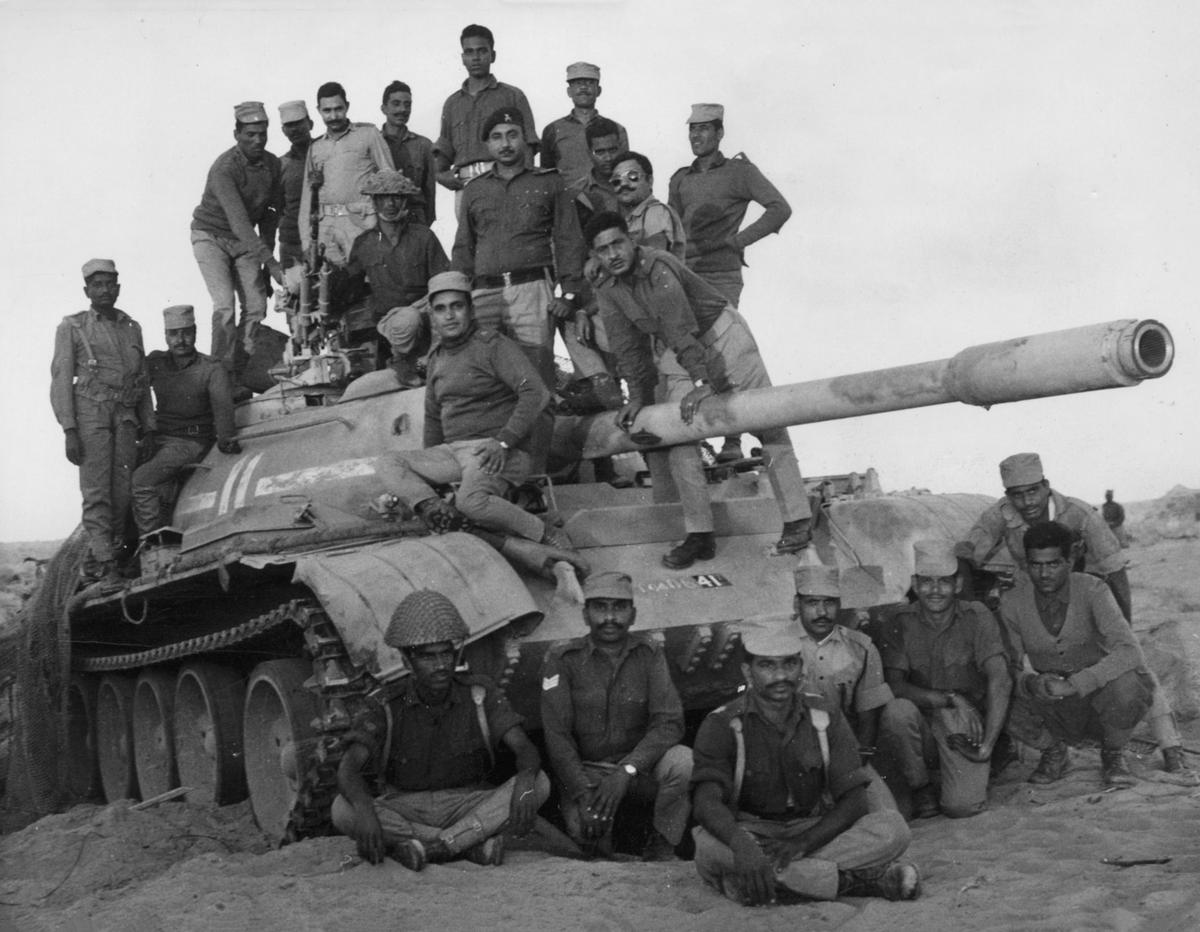
Indian Army officers and jawans standing atop a disabled Pakistani tank in the Longanavala area of the Rajasthan sector on December 11, 1971.
| Photo Credit:
The Hindu
The sleepless night and Harkamal’s experience made me wonder what it would possibly be to live in the border areas, just few kilometres from Pakistan. So, I spent the rest of my time calling friends in Kashmir. One of them, who prefers to stay anonymous, said, “The Pahalgam terror attack was the first of its kind attack on tourists in Kashmir. We have been experiencing blackouts and are following all instructions, but I hope the war ends soon.”
On May 10, when Donald Trump’s tweet on X stated a “full and immediate ceasefire” between India and Pakistan, it brought joy to most people living on the borders. Nasir Khuehami, a student at Jamia Millia Islamia and national convenor of Jammu and Kashmir Students Association (JKSA), who has been in Kashmir for the past few days, said, “We didn’t sleep for three days. In my 27 years of life, I’ve never witnessed such a terrifying atmosphere, complete blackouts, powerful explosions, drone attacks, and the deafening response of air defence systems countering them in real time. For the past four–five days, the situation has been nothing short of horrifying. The fear and helplessness stemmed largely from the fact that both countries involved are nuclear powers. The escalation was rapid and relentless, first came the strikes, then intense shelling along the border, followed by a barrage of drones, loud blasts shaking the ground, and fighter jets roaring across the sky. At one point, it truly felt like a full-scale war had begun and that it could very well be the end of our lives. We clung to hope, but the fear was overwhelming. Every moment was filled with dread, and we didn’t know if we would live to see the next day,” he said.
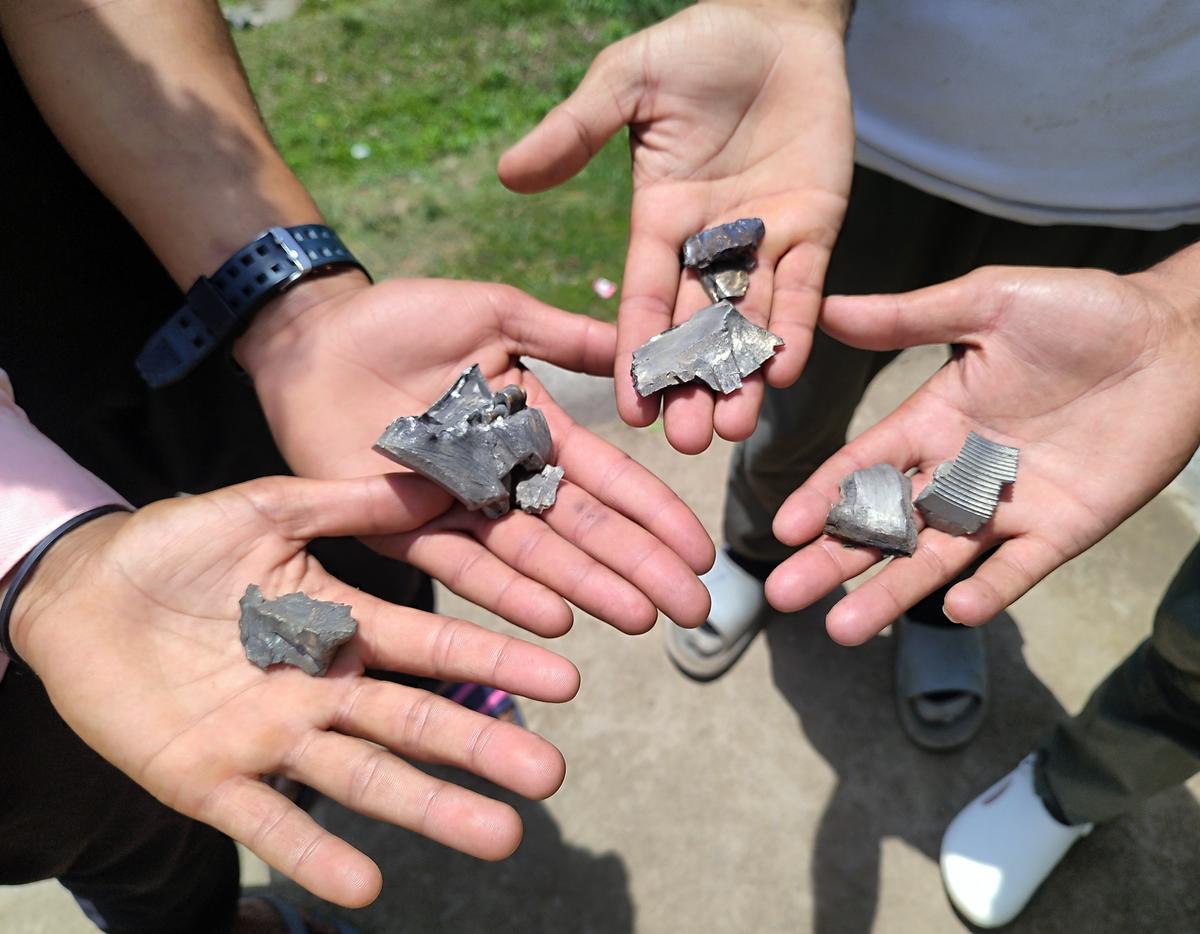
Fragments of a projectile recovered after heavy shelling by Pakistan, at Salni village in Poonch on Saturday.
| Photo Credit:
ANI
He was joined by a friend whose family in Poonch weathered the blows of war. Ahjaz Mir, who is now in Jammu, preparing for the Civil Services Examination, said he has been fretting over the situation in Poonch where his family stays. “In Poonch, even those places have been targeted that have never been targeted before, from schools to madrasas. People shifted to Surankot (about 40 kilometres from the Indo-Pak border) for safety, but even there, one girl was injured. The area has Pahari and Gujjar communities. They don’t even have basic infrastructure, leave alone bunkers. However, things have been much better after the call for ceasefire,” he added.
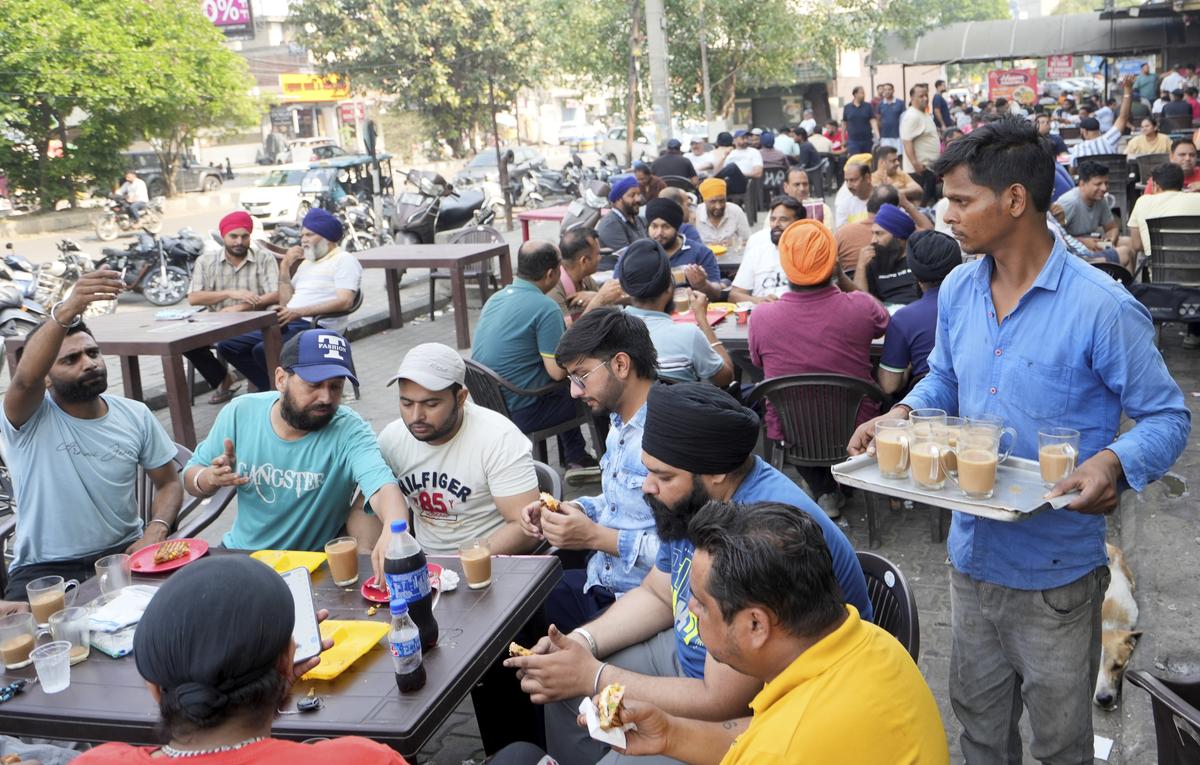
A vendor serves tea to customers as people resume normal activities, a day after India and Pakistan agreed to a ceasefire along the Line of Control and International Border, in Amritsar, Sunday, May 11, 2025.
| Photo Credit:
PTI
I am not much of a believer, but with every blackout and with every sonic boom I heard, I made a silent wish for the safety of my family, friends, colleagues and those brave soldiers who were guarding our lives with their lives. Amidst the crippling sound of blaring sirens, videos and memes on social media, and the rants of prime-time television news anchors, who went on to make claims like “Indian Navy had attacked Karachi port” and that there could be a “fidayeen attack”, I found myself battling with technology for credible information.
Call me old fashioned, but I ditched my urge for instant information through TV, reels or gram and trusted the printed word in the newspaper instead. They say, a war is won with many battles and though this conflict may have come to an end for now with a call for ceasefire, there still is an uneasy calm that lingers, as we battle fake news, propaganda, trolls and war hysteria.
Published – May 12, 2025 12:59 pm IST
Source:https://www.thehindu.com/society/india-pakistan-war-sees-blackouts-in-north-india/article69563925.ece

